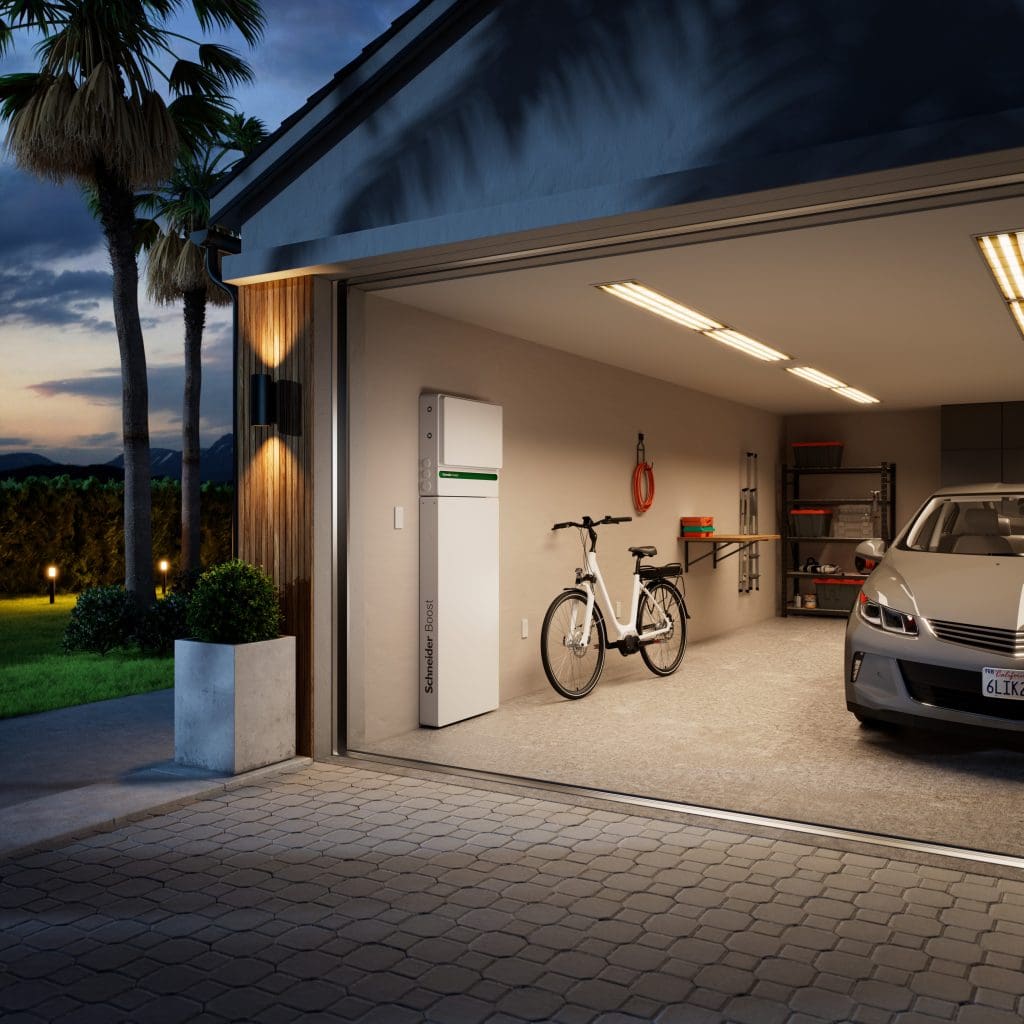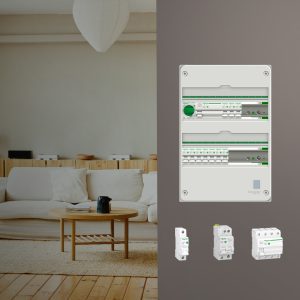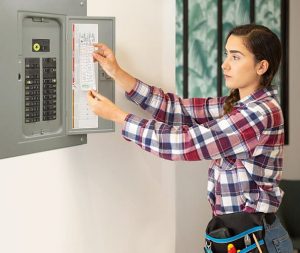Many of us know very little about the crucial role the electrical panel plays in our lives. Not only is this unassuming box responsible for distributing electricity throughout your home and ensuring each area gets the right amount of power, but it also plays a vital role in preventing electrical fires.
It essentially plays the role of ‘the boss’, masterminding the management of the electrical supply to our homes, tucked away out of sight but quietly continuing this role day and night.
Our recent consumer survey revealed that 29% of people don’t understand the role of the electrical panel within their homes. This number rises to 41% amongst those aged 18-34.
The survey also highlighted other surprising findings:
- 16% of consumers are unaware of where their electrical panel is located.
- This figure jumps to 25% amongst 18–34-year-olds
When everything in our homes is working smoothly, the electrical panel is often forgotten – out of sight, out of mind. We plug in our devices and expect them to work without a second thought, until a problem arises and the power trips, at which point we must seek out the electrical panel.
However, this “hidden box,” usually located in the garage or a cupboard, is set to play an even larger role in our lives. As the new energy landscape continues to evolve, it will increasingly manage the integration of renewable technologies and communicate with the national electrical grid.

Why the electrical panel is really in charge
According to the European Fire Safety Council, it is estimated that electrical fires across Europe account for around 25%-30% of all residential fires – or roughly 273,000 per year. Furthermore, these electrical fires are predominately caused by faulty of aging equipment. This highlights just how crucial the electrical panel is, as the hub responsible for safely managing and distributing electricity in our homes. It minimises the risk of fires from electrical appliances by using circuit breakers that can handle electrical overloads by breaking the circuit. When the power is cut by a breaker, it mean you, your family and your belongings are protected from a potentially dangerous electrical hazard.
For more than 100 years the electrical panel has been the silent guardian of electrical safety in our homes ensuring the appliances and devices that matter to you, such as washing machines, dishwashers, microwaves and even EV chargers, operate safely. As we continue to add more devices to our homes, it’s important to ensure the electrical panel can handle the increased load and is being maintained, especially in older homes. After all, an electrical panel typically lasts between 25 and 40 years, so some love and care every once in a while will help keep it working at its best.

The growing demand for electricity
Since Thomas Edison introduced the first circuit breaker in 1879, the electrical panel has evolved and remains a cornerstone of modern living. Now, with the rise of solar panels, electric vehicles, and heat pumps, we’re entering a new energy landscape, which creates new pressures for the electrical panel to handle. But just how many of these challenges are being recognised?
- AC/DC: Traditionally, homes were powered by alternating current (AC), with all devices running on AC. Now, many devices, including tablets, smartphones, and electric vehicles, run on direct current (DC). The electrical panel must manage this complexity, especially with DC coming from solar power and energy storage.
- Sustainable living: As we add more sustainable technology and move towards energy electrification, the impact on our homes is significant. From replacing petrol and diesel cars with electric vehicles to adopting sustainable technologies like ground-source heat pumps, we’re continuously adding more electrical loads – many of which are significantly large loads – to our homes.
- Rise of the energy prosumer: Additionally, with more homes investing in solar power, many of us are no longer just energy consumers who draw power from the grid, we are now energy prosumers, capable of generating our own energy which can be used throughout the day – and in some cases, used during the night when utilising battery storage.
At the heart of these three key technology transformations within our homes is the electrical panel, which can do much more than just safely distribute electricity within the home, it is also helping people to manage their energy consumption, reduce their bills and lower their emissions.
This can all be achieved with solutions such as the Schneider Electric Smart Home system, a home energy management system which can monitor or control energy use to shift the times at which loads are run, or which energy source to draw from thereby maximising energy efficiency.
The electrical panel – meeting the challenges of today and tomorrow
There can be no doubting that the electrical panel is truly ‘the boss’ at home, playing a crucial role in protecting our personal safety and helping us to have better control of electricity consumption.
It has grown from simple fuse boxes to the ingenious smart panels that are available today and will continue to evolve as even greater demands are placed on it by the ongoing electrification of homes.
In a more electrified world, where homeowners are looking to integrate PV generators, solar panel generators, batteries, and other renewable sources, ‘the boss’ will take on even more responsibility. It must be able to seamlessly integrate these complex loads, which will allow users to harness green energy while efficiently managing its distribution and usage.
As we move towards a future powered by sustainable energy, the electrical panel will remain at the heart of our homes, ensuring safety, efficiency, and control. Truly, ‘the boss’ is ready to meet the challenges of tomorrow, making our homes smarter and greener. Read here to find out the role of electrical panels in future homes.




Add a comment